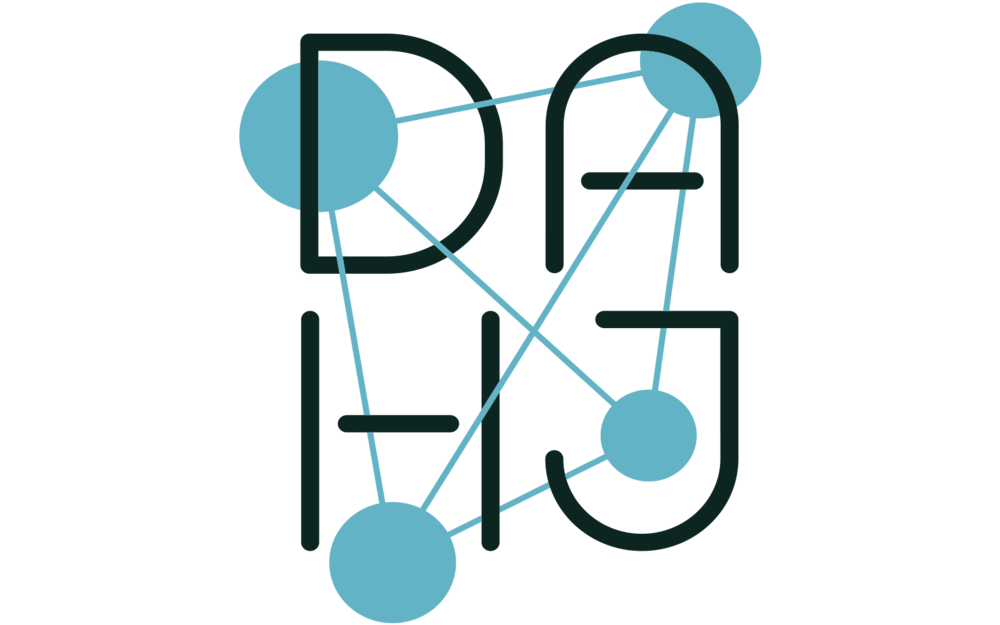Genetic Identity Part I, 2023
AI-generated image (DNA Sequencing in Midjourney 4/5 Photoshop)
Artist, curator, and theorist Patrick Lichty has been working with new media technologies for decades, most notably through collaborations with the virtual reality performance art group Second Front and the activist group The Yes Men. Lichty is interested in cognitive science, perception, and social discourse; his conceptual work often highlights the construction of narrative and mediation of reality. Genetic Identity Part I is an investigation of selective editing and artificial intelligence’s ability to abstract identity. Lichty has limited vision – following the advice of an ophthalmologist, he recently went to the Mayo Clinic for genetic testing in an attempt to locate a particular genetic marker for his condition. The artist gained access to his own genetic data through this process, which he used to input into Midjourney and create multiple variations of the sequence. In a process of prompt editing and re-editing, Lichty transformed his own DNA from the familiar molecular structure, to one resembling cotton candy, to this rainbow latticework. According to the artist, this technique allows for an investigation into the “subconscious” of AI by tracing how data sets become visualized.
Artist Bio
Patrick Lichty (Winona State University) is a media “reality” artist, curator, and theorist who explores how media and mediation affect our perception of our environment. He is best known for his work as a principal of the virtual reality performance art group Second Front, and the animator of the activist group, The Yes Men. He is a CalArts/Herb Alpert Fellow and Whitney Biennial exhibitor as part of the collective RTMark. For a decade, he was Editor-in-Chief for Intelligent Agent, a New Media art and criticism journal produced by Whitney Digital Arts Curator, Christiane Paul, and was a staff critic for Harper’s Bazaar Art Arabia. For nearly the last decade, he has been involved in the exploration of Machine Learning (AI) art and blockchain-related forms, as documented in the monograph, “Studio Visits: In the Posthuman Atelier,” a curatorial project chronicling fifty entirely “synthetic’ artists and their work. His book, Variant Analyses: Interrogations of New Media Culture, was released by the Institute for Networked Culture, and is included in the Oxford Handbook of Virtuality.
Patrick Lichty on ai art, the artist’s hand, and the effect of AI on the market:
“This is relating to the relationship between the AI tool, the artist, and the subject.
This has to do with some recent theory that I'm working for Isaiah and the Electronic Literature Organization. As far as I'm concerned, what we have is a semantic translator which then goes to a latent space of possible images which then translates it into, you know, what goes through the diffuser and it comes out to make an image. That means there are some large dissonances in place. I look at it as concrete prose and process art and it has caused me to create what I call contrarian aesthetics in which I try to look at what everybody else's prompts involved and try to basically not do that. Or at least go to Eisenstein's theory of montage and for material dialectics and try to slam two ideas together and try to get a third by using dissonant terms and a prompt.
This basically goes back to this idea that I have that this AI work is not art in itself. It's concretized prose. So I don't feel that conventional concepts of art making, except those for maybe of Cage's ideas of the aleatoric or the remix, are necessarily in play.”
“Considering originality in the artist's hand. This has always been kind of a question, but if we look through art history, we see that art borrows and there's the old phrase that “good artists borrow, great artists steal.” We often attribute that to Picasso, but I question that. Art is a conversation. And conversation has a language and references and this is no different. As far as the artist's hand is concerned, we can go into things like process art, Fluxus, combinational art like William S Burroughs and Brion Gysen, what Cage calls the aleatoric.
I've had a lot of exposure to directly working with some of the original Fluxus artists. I'm not disturbed about this at all. I think it's just merely another form. It's just the way the artist frames it. In other words that they're looking at it as this original work, if they're representing it incorrectly, this is where I had the problem.”
“The effect of AI on the market, creative art, et cetera. It's already having one. You know, there's the story of the person who got into a creative agency with a piece of AI and couldn't use Photoshop just thinking that they could use prompts.
I think that actually we're in a period that is about as profound as 1990, when you were going from one program or just a small set, like the Corel Suite into a larger set of different platforms – kind of like Adobe is now. I think we're going to the next one as I see complex process chains going with various AI artists, which seem a little daunting at first. But, you know, they're just things that you just sit down and you just work out.
Is it going to affect the market? In many ways, I think it's like desktop publishing and graphic design – people who are just interested in the bottom line and just getting something out that's going to do basic communication are probably going to use AI. Those who are interested in something that is more specific and is communicating something with a deeper semantic quality, I think are probably still going to be dealing with human creatives, and this is no different than the past. It's just the fact that it tends to narrow the market and that's my only regret.”

